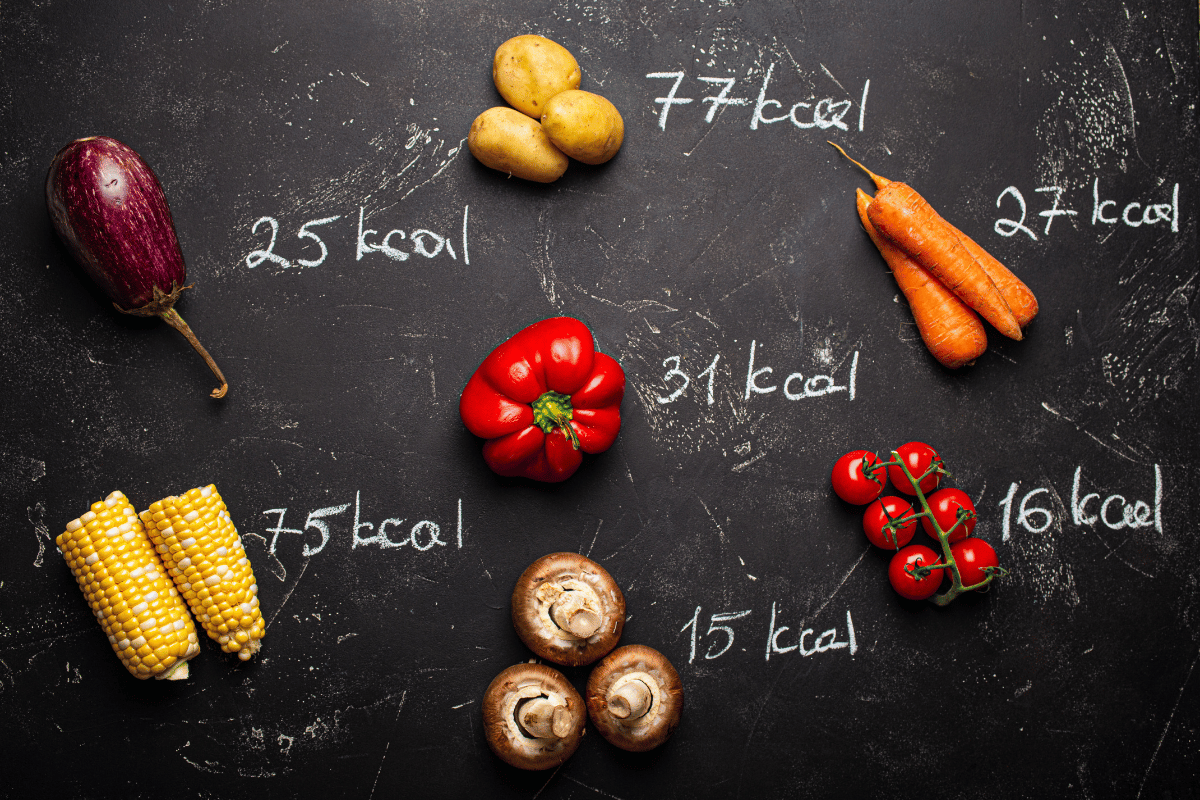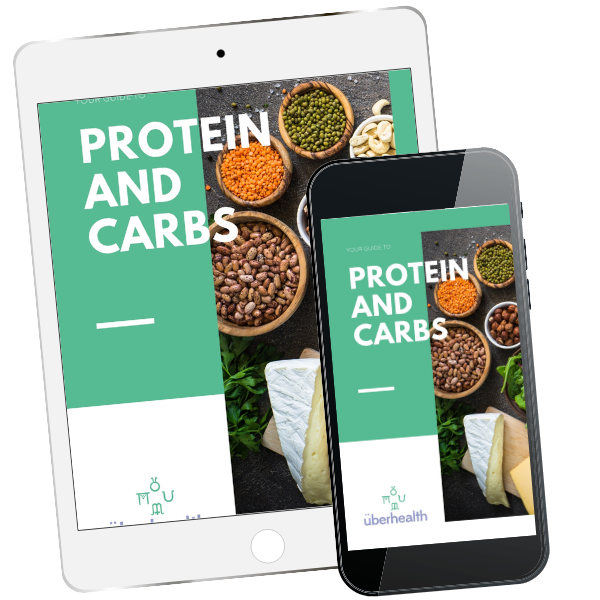Weight Loss Nutrition: Why Physiology Trumps Counting Calories

We’ve all heard it a thousand times: “It’s just calories in versus calories out.” And yes, mathematically, energy balance matters. But if calorie math was the whole story, everyone who tracked their food app numbers would reach their goal weight and stay there.
They don’t.
Because your body is not a calculator. It’s chemistry. Dynamic, adaptive, and brilliantly protective.
Real weight-loss nutrition isn’t about starving the body into submission. It’s about understanding how it uses fuel, how it protects fuel, and how to work with physiology instead of against it.

Understanding metabolism and fuel systems is far more powerful and sustainable than counting calories ever will be. Here’s 10 reasons why…
1. Your Body Isn’t a Bank Account. It’s a Biochemical Factory.
When we eat, move, rest, and stress, we’re constantly signalling biochemical pathways. Calories tell us how much energy is in food; physiology decides what happens to that energy.
You could eat two diets with the exact same calorie count and get completely different outcomes, depending on:
- the macronutrient balance (protein, fat, carbohydrate)
- the timing of meals around exercise and sleep
- your hormonal state (stress, insulin sensitivity, menstrual phase, menopause, etc.)
- the condition of your mitochondria—the tiny engines that burn fuel for energy.
When you understand the physiology of energy use, you stop treating food as maths and start treating it as information.
Your metabolism is constantly interpreting messages:
Are we safe?
Are we under threat?
Is energy plentiful or scarce?
Should we build, burn, or store?
Calories alone can’t answer those questions. Hormones, enzymes, and energy systems do.
2. The Three Energy Systems: The Foundation of Fuel Use
Most people vaguely know that “carbs give energy” and “fat burns when we move slowly.” But here’s how it actually works:
|
System |
Oxygen Use |
Primary Fuel |
Intensity |
Duration |
|
Aerobic (oxidative) |
Uses oxygen |
Fat + Carbs |
Low-Moderate |
Minutes to hours |
|
Anaerobic (lactate) |
No oxygen |
Carbohydrate only |
Moderate-High |
Seconds to minutes |
|
Phosphate (ATP-PC) |
No oxygen |
Phosphocreatine |
Max effort |
5–10 seconds |
These systems overlap like gears. Even when you’re sitting, your aerobic system hums away, burning mostly fat. As intensity rises (i.e. running or heavy lifting) the body can’t deliver oxygen fast enough to keep the aerobic engine running efficiently, so it shifts to faster, carbohydrate-dominant energy production.
Understanding this matters because the way you train determines what your body learns to burn.
If you never reach your aerobic “sweet spot” (roughly 60–65 % of your max effort) you won’t build the mitochondrial capacity that allows efficient fat oxidation. And if you never challenge yourself above that threshold, you won’t stimulate muscle growth or metabolic flexibility.
So instead of asking, “How many calories did I burn on the treadmill?”
The better question is: “Which energy systems did I train today?”
3. Mitochondria: The Unsung Heroes of Weight Management
All true fat burning happens in the mitochondria. These tiny organelles are your body’s energy factories, turning fats, carbs, and even amino acids into ATP aka the cellular currency of energy.
The healthier and more numerous your mitochondria, the better your body can use fat as fuel, regulate blood sugar, and maintain steady energy between meals.
Here’s what helps them thrive:
- Regular movement especially endurance exercise and strength training.
- Adequate protein for repair and mitochondrial enzyme production.
- Micronutrients like magnesium, iron, B-vitamins, and CoQ10.
- Stable circadian rhythms because mitochondria are light-sensitive!
- Balanced stress because chronic cortisol surges damage mitochondrial efficiency.
Think of mitochondria as your metabolic engines. If they’re sluggish from under-eating, stress, or inactivity, it doesn’t matter how perfectly you log your calories, your “engines” can’t burn the fuel properly.
4. Fat Burning vs Carb Burning: The Crossover Concept
Every person has a unique “crossover point,” where the dominant energy source switches from fat to carbohydrate. In most moderately fit adults, this happens at roughly 60% of maximum capacity. Below that point, you’re using mostly fat for fuel. Above it, you shift toward carbohydrate metabolism, producing more lactate and fatigue.
The Key: The fitter and more muscular you are, the further to the right that crossover point moves and you can burn fat efficiently at higher intensities.
Conversely, when you’re unfit, stressed, or insulin-resistant, the crossover moves left and you start burning carbs (and craving carbs) at lower effort levels.That’s why aerobic base training, resistance work, and stress regulation are so vital for sustainable weight loss. They literally re-train your metabolism to use fat more efficiently.
5. Cortisol, Stress, and the Metabolic Brake
We often blame willpower when weight loss stalls, but the real culprit is often cortisol aka the body’s main stress hormone.
A little cortisol is helpful. It mobilises fuel for movement and wakes us up in the morning. Too much, for too long, tells the body: “We’re in danger. Conserve energy. Store fat.”
High cortisol suppresses fat oxidation and increases carb dependence. It also disrupts sleep, alters appetite hormones (ghrelin and leptin), and slows thyroid function… All of which can mimic “metabolic damage.” hat’s why “eat less, move more” backfires for chronically stressed clients. The physiology is working against them.
Supporting recovery, sleep, and nervous-system regulation is as essential to fat loss as any diet plan.
6. Protein: The Metabolic Multitasker
Protein isn’t just for bodybuilders. It’s the cornerstone of any weight-management program because it:
- Preserves lean muscle mass while losing fat.
- Increases the thermic effect of food as it costs energy to digest.
- Provides the building blocks for enzymes, neurotransmitters, and hormones.
- Triggers muscle-protein synthesis via the amino acid leucine.
The research sweet spot for most active adults is 1.4–2.0 g of protein per kg of body weight per day, spread evenly across meals.
Each meal should include about 25–40 g of protein and at least 2.5 g of leucine to hit the muscle-building threshold.
And yes, that’s often more than people think they need. When clients finally hit those numbers, appetite stabilises, recovery improves, and fat loss becomes easier. Not because of calorie restriction, but because their physiology is finally supported.
7. Why When You Eat Matters (Not Just What You Eat)
Timing nutrition around movement is one of the most under-taught principles in weight management.
Before training: Fuel depends on the goal.
- For high-intensity or strength sessions: a small carb-protein snack 30–60 minutes prior prevents fatigue and preserves muscle.
- For easy aerobic sessions: occasionally training fasted can enhance fat adaptation—but only if overall stress and sleep are good.
After training: This is non-negotiable.
Eating within 30–60 minutes of finishing exercise accelerates recovery, lowers cortisol, and restocks glycogen.
You’re also more insulin-sensitive in this window, meaning the carbs you eat are more likely to go into muscle, not fat storage.
That’s physiology at work which is far smarter than calorie math.
8. Adaptive Thermogenesis: When “Less” Backfires
Cut calories hard for long enough, and your body fights back because the body’s goal is survival, not aesthetics. So resting metabolism slows, hunger hormones rise, and the thyroid down-regulates to conserve energy. This phenomenon is called adaptive thermogenesis and it’s why long-term dieting often leads to plateaus and rebounds.
Strategies that counteract it include:
- Cyclical dieting: alternating lower- and higher-intake phases (“refeed days”).
- Strength training: maintaining muscle to preserve metabolic rate.
- Adequate sleep and stress management: to keep hormones balanced.
- Avoiding excessive cardio: which can increase cortisol and muscle loss.
When you understand these physiological feedback loops, you can design nutrition plans that work with the body instead of triggering its defence mechanisms.
9. Minding the Mitochondria: The Longevity Link
Holding muscle as we age is now recognised as one of the best predictors of longevity.
Why? Because muscle houses mitochondria, and mitochondria are the only place we burn fat.
Each decade after 30, we lose 3–8 % of muscle mass unless we actively resist it. That loss, known as sarcopenia, doesn’t just change body shape, it slows metabolic rate and weakens glucose regulation.
So, while calorie restriction may produce short-term weight loss, building and preserving muscle is what sustains it.
It’s less about eating less, and more about eating intelligently and moving intentionally to protect your mitochondria.
10. Why Physiology Wins
Counting calories can feel satisfying. It’s measurable, tangible, and gives an illusion of control. But physiology is the truth underneath the numbers. Your body is not trying to make your jeans tighter; it’s trying to keep you alive in an ever-changing environment. When you feed, move, and rest in ways that respect its design, it rewards you with energy, mood stability, and sustainable weight balance.
So, before you shave another 200 calories off your meal plan, pause and ask:
What is my body trying to tell me?
Am I fuelling my metabolism or fighting it?
The future of weight-loss nutrition isn’t about smaller numbers on a screen. It’s about smarter conversations with the most intelligent system you’ll ever own - your own physiology.

Bringing It Together: From Science to Application
If you want to go beyond calories and learn how to assess, educate, and guide clients through the real physiology of weight loss, check out my 5 part training for practitioners: Applied Weight Loss Nutrition.
This 5-part live training dives deep into the metabolic, hormonal, and practical aspects of fat loss for practitioners and motivated individuals. You’ll learn how to translate the research into actionable strategies that actually work in clinic (and real life).
When I teach “Applied Weight-Loss Nutrition” I remind practitioners that theory only matters if we can turn it into action.
Here’s how to translate physiology into practical coaching:
- Teach clients the “why.”
When people understand what their body is doing with food and exercise, compliance skyrockets. Education reduces fear of carbs, calories, and even weight training. - Build metabolic flexibility.
Encourage a blend of movement styles: aerobic base training, resistance work, and occasional high-intensity intervals. Variety trains the body to shift between fuels smoothly. - Prioritise recovery as much as activity.
Sleep, stress, and circadian alignment are metabolic levers. Under-recovery is as counterproductive as overeating. - Focus on protein first, then quality carbs and fats.
Macros are messages. Start meals with a protein anchor, add colour and fibre, and let fats balance flavour and satiety. - Re-feed strategically.
Short calorie breaks reassure the body that it’s not in famine mode. They also improve adherence and thyroid function. - Personalise.
Menopause, medications, training load, and genetics all change the equation. Weight loss must fit the individual’s physiology, psychology, and lifestyle—not the latest macro trend.
The difference between knowing the science and applying it… is the difference between information and transformation.
Find out more about the Practitioner Training: Applied Weight Loss Nutrition
Article Takeaways
- Calories matter, but context matters more.
- Energy systems, not spreadsheets, dictate how fuel is burned.
- Protein and muscle mass protect metabolic rate.
- Stress, sleep, and hormones influence fuel choice and storage.
- Timing nutrition around movement amplifies results.
- The goal is metabolic flexibility, not endless restriction.
FREE RESOURCE


